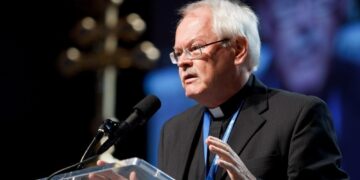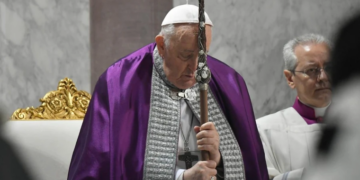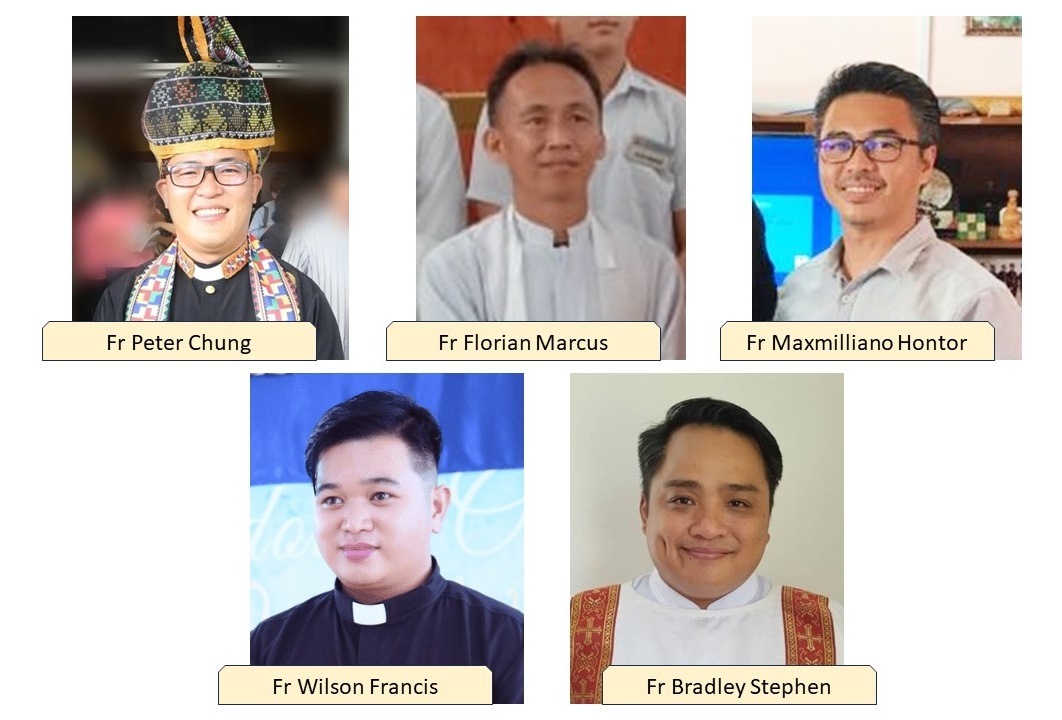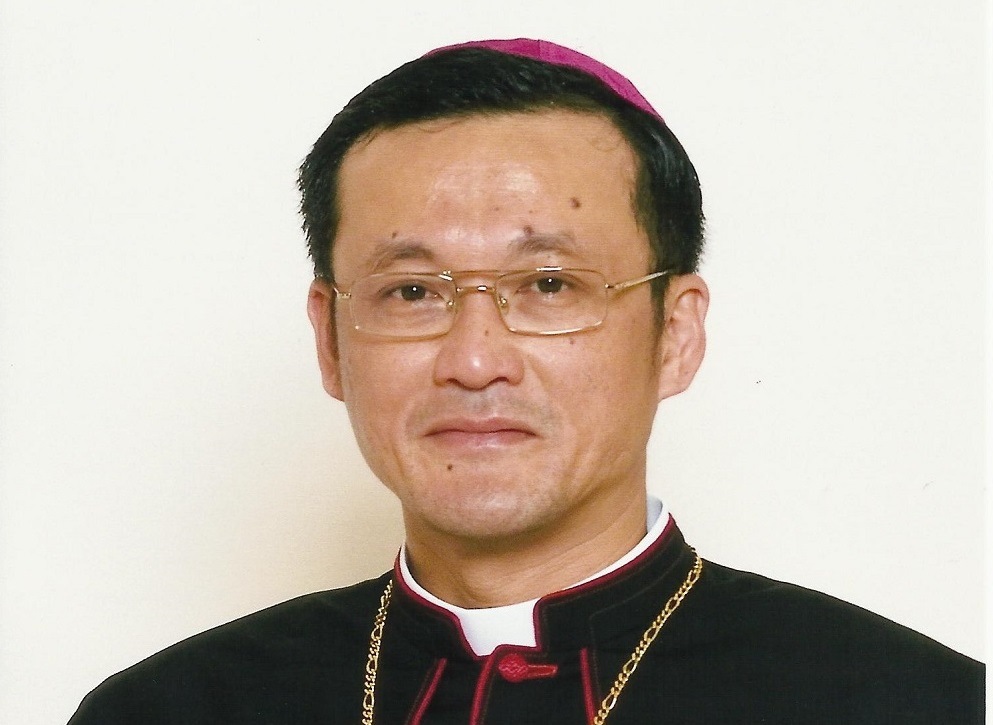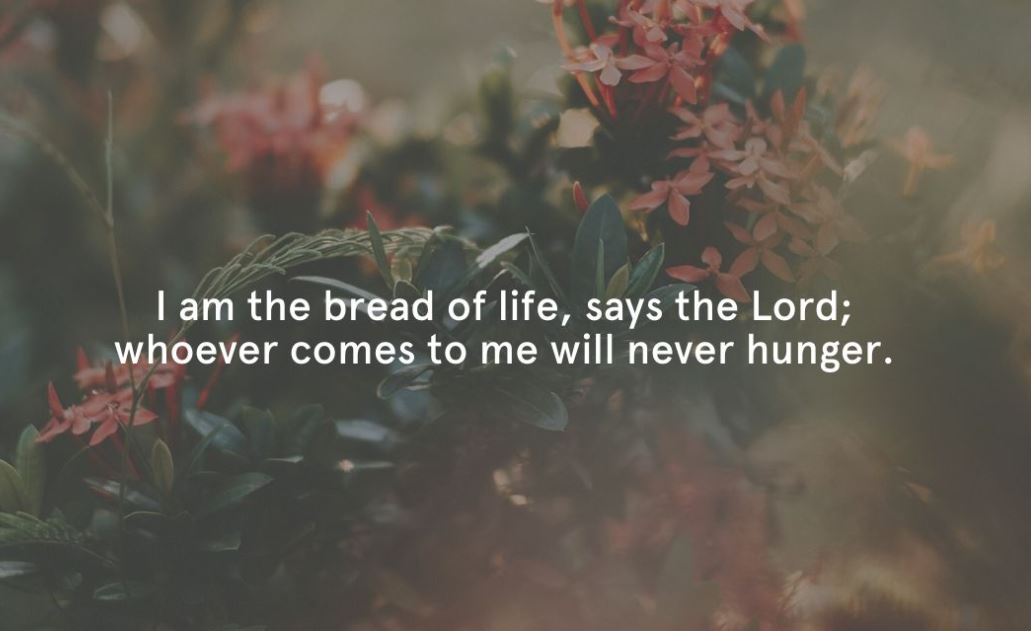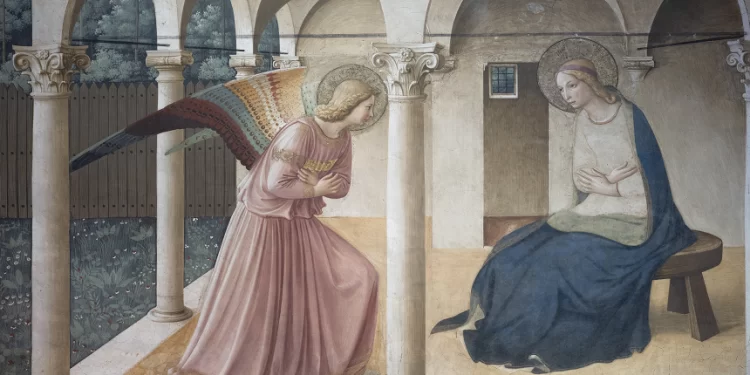
Bert Daelemans, SJ
A new method of giving the Spiritual Exercises is emerging: one that is creative yet faithful to tradition. Ignatius of Loyola himself had expressed a desire to include images in his text of the Spiritual Exercises (SE). Some 100 years after the first edition, the first illustrated version was published in Rome, inaugurating a long and fruitful tradition that is still alive.
This is an inherently Ignatian proposal and it manages to avoid the usual pitfalls of some retreats. Think of those who do not pray in a personal way, but get carried away by what the preacher says, contravening the recommendation Ignatius gives at the beginning of the Exercises, not to stand between the Creator and his creature and to let the Lord communicate directly, “embracing him or her in his love and praise” (SE 15); or the pitfall of remaining in intense mental reflection, in “much knowing,” without “realizing and relishing things internally” (SE 2).
This article will be developed in three parts. In the first we will outline an Ignatian way to approach art, discarding three ways that we consider inadequate. On this basis, in the second part, we will list ten surprising fruits of such an experience. Finally, in the last part, we will briefly present our practical proposal for praying with art.
An Ignatian Way of Approaching Art
First of all, we need to clear the air regarding an objection that is often made about art, namely, that it distances us from reality. During one of our lectures on this topic, a listener criticized art, guilty, in his view, of sweetening and distorting reality, which is often brutal and violent, creating an imaginary world and unable to offer a secure ground for approaching the God of Jesus Christ.
This objection is a valuable criterion for distinguishing “authentic” art, so to speak, from sweetened forms of expression, which do not challenge us at all, keeping us locked in our comfort zone and returning only the image we already have of ourselves. The same objection serves to distinguish authentic from false prayer. About this tiresome form of art, of course, we will not speak, because we do not believe it is useful for an Ignatian path.
Now, the only works of art to be disregarded are those that do not help a person “achieve the end for which he or she is created” (SE 23); whether they are then useful to others is not for us to judge. Romano Guardini affirms that art worthy of the name does not merely restore reality to us as it is, as a mirror or a newspaper would do, but “celebrates” it with a note of hope, showing how the germs of God’s kingdom are also present in that reality. In this sense, it can show violence without violating, directing us to the good (as when those who offer the Exercises must make sure that the exercitant feels spiritually “moved” and is doing them in the right way ). Of course, neither for Guardini nor for us does the art that achieves this result have to be of religious subject matter.
In order to propose an Ignatian way of approaching art, it is worthwhile to illustrate three others that are not fully Ignatian, but which we may have used during our retreats: the first is to use art for religious purposes; the second is to use it to illustrate a concept; and the third is to observe art as spectators. These are legitimate ways, and they certainly have their place in the Exercises, but they are not fully Ignatian. Instead, here we would like to propose a truly new and deeply Ignatian way, in which art is not simply a remedy or a pretext, but the very focus and essence of prayer.
Using Art for Religious Purposes
First, we must reject the use – and propagandistic abuse – of art for religious ends. This happens when we seek in it only what we want to find, what we have established in advance, dogmatically or otherwise. If we can separate the message from the work, we do not value the art itself.
Praying with art, on the other hand, means contemplating art itself and discovering in it a spiritual substratum – right there, and nowhere else – that is, in a sacramental way. Spirituality does not turn away from the world and matter, or from God; on the contrary, it finds in art a fertile ground in which grace subsumes nature, revealing its latent dimension of joy and life without destroying anything.
Using Art to Illustrate a Concept
Another erroneous way is to use art to illustrate a concept. Thus art becomes a secondary element, at best a sterile application of the five senses to a mental construct.
It is something else to propose an image as a composition of place, as a space that opens up before us, no longer in words, but in “visible words,” to borrow an expression of St Augustine, that is, by means of colors, lines, volumes, light, space, gestures, glances and hands that speak to us without the need for words.
Of course, words help, but more as subtitles or footnotes, clarifying rather than explaining, and opening rather than closing the space opened by the work. In this sense, words, ideas and concepts are necessary, because here it is not a matter of mere sentimentality, or of wandering into emotions, but of understanding with all our mental faculties, starting from a holistic conception of reason and intelligence, including the emotional dimension and that related to imagination.
Observing Art as Spectators
Many retreatants who choose this approach are praying with art for the first time. Praying with art means more than observing or admiring art as an outside viewer might do from a distance. Even when we visit a museum, we rarely allow a work of art the space, time, silence and listening necessary for it to communicate to us all that it has to say to us (in our case, what the Holy Spirit can say to us through it).
Just as in life, our consumerist urge drives us from one thing to another, appreciating only the first superficial impressions. Thus we leave many succulent “banquets” without enjoying them, giving up crumbs and leftovers that are still appetizing, without extracting all the nourishment they contain (therein lies the value of “Ignatian repetition”).
That is why it is very useful to do the Exercises from time to time: to see as new all the things we have experienced and recapitulate them in Christ, to appreciate the “crumbs” and be the “alms bowl that accepts fallen leaves,” as per a famous haiku by Taneda Santōka, with which we are wont to begin the time of the Exercises. Accompanied by the work Acumulación (2016), by Madrid-based sculptor Cristina Almodóvar, this haiku performs authentic wonders, helping many exercitants to be silent and to “prepare and dispose the soul” (SE 1) as a sounding board and a bowl that allows one not to waste those crumbs and fallen leaves, valuing them for what they are, small gifts that fall from heaven, and simply see “how all goods and gifts descend from above” (SE 237).
The time we devote to the Exercises, even when it does not offer us any new “content,” can at least be a time of grace in which we see with new eyes, from the perspective of Jesus, the experience we bring to the Exercises. In this sense, the things of life that become part of our prayer are not necessarily distractions; they can be leftovers from banquets, crumbs that still claim our attention, especially in the time when we are silent and make space to listen to God. Perhaps the God of the crumbs wants to question us about our half-lived lives: not to bring forth a new idea or experience, but so that what we have experienced with him will take root and become better imprinted on our hearts.
We believe that this is one possible interpretation of what the Virgin sings in the Magnificat: “He has sent the rich away empty-handed.” For us who are rich, it is a grace to be regarded as begging bowls, empty and emptied space. We often arrive at the Exercises tired, but rich in experience, overloaded with life lived quickly without having savored it to the full, in that depth in which God dwells and waits for us. Therefore, we do not need new things-ideas-experiences, but space and silence to welcome and savor what we have lived, realizing and relishing it internally under the gaze of Christ, with whom we can converse amicably at the end of each moment of prayer.
It is very countercultural and courageous to stop and be content with just one thing, a crumb, a fallen leaf: a little thing, perhaps, for those observing from the outside, but for simple and courageous people a crumb capable of nourishing to the point of satiety, and even softening the heart of Jesus (cf. Matt 15:21-28). This is, perhaps, the wisdom of elders and mature love, matured not by remaining immaculate after all the possible labors and deserts that are celebrated in the hymn of love (cf. 1 Cor 13), but by going through them with heroism.
To pray with art, then, means to enter a space opened by it, “with great courage and generosity toward its Creator and Lord, offering Him all my will and liberty” (SE 5), willing to be touched, moved, challenged, removed from our positions, perhaps even to be displaced and provoked, like the prophets. Among the many works of art, there are masterpieces that with incredible ease manage to speak to many people about the encounter with God in an immediate, almost sacramental way. They are vehicles of the word of God, making the incarnate Word present. Therefore, in order for observation to become prayer, time, silence, attention and willingness to allow oneself to be challenged are necessary in the first place, making sure that the object – that is, the work of art – is the voice of the Subject, namely, that it is God who has the initiative in prayer, who speaks in the work.
Secondly, it is necessary to open oneself up in the first person as a sounding board for that voice that comes to us through the work, to listen within, to even the slightest resonance or resistance provoked by the object contemplated, “marking and dwelling at the points where I felt greater consolation, desolation or greater spiritual feeling” (SE 62).
An Ignatian way of approaching art from this perspective is to “reflect in order to draw some profit” (SE 108) from the contemplated object, to be a sounding board for what is being contemplated, to listen within ourselves to the motions and agitations (cf. SE 6) that may occur, without excluding any. In other words, we must allow the contemplated mystery to be reflected in us as a liberated “space,” as if we were a mirror.
This is why it is essential to “prepare and dispose” (SE 1) the “space” that we are, which does not so much mean eliminating spots and wrinkles with a perverse eagerness to be pure and spotless, but ordering them, putting worries, doubts of faith and failures of charity and hope where they belong, without making them occupy all the space, but arranging them in their order relative to Christ, who, recapitulating them, consecrates us in love (cf. Eph 1:4). Ultimately, it is a matter of arranging ourselves as an open and receptive space, not remaining passive and stunned, but alert and cautious like serpents (cf. Matt 10:16), and activating all the mental faculties, not so that God may speak, but so that we may hear what God says.
Contemplation, in fact, is an exercise in listening. Observing art and using it for religious purposes are just ways of approaching it from the outside (looking, understanding, gathering information about the work or the author), while praying with art is essentially contemplating and listening to what God is saying within us.
Fruits of Experience
Praying with art represents a huge advantage over more traditional ways of offering the Exercises: it avoids the risk, for those who give the Exercises, of interposing themselves between the exercitant and the Creator and getting lost in mental gymnastics. In this sense, it is a more specifically Ignatian way than others to which perhaps a certain type of exercitant is accustomed. For Ignatius, the Exercises were an aid to going deep, from the mind to the interior, there where God speaks to us and where life is born, to a place much deeper than the mind and heart.
We will now list ten benefits of this experience, which constitute surprising gifts and achievements arising from the practice.
1) Art allows for more immediate and broader contact than the mind
Words help, but sometimes they get in the way. They should leave space and lead to silence and contemplation. Art allows more immediate contact with mystery than reasoning. It expands ideas while also embracing the emotional, affective, perceptual and bodily sides. Praying with art does not sideline reason; on the contrary, it activates it even more, especially in its less explored aspects. Therefore, it is not an irrational experience, but a deeply reflective and reflexive one.
The more we practice and present the Exercises, the more we realize that what Ignatius had in mind was a schola affectus: a path that is more contemplative and less mental, more oriented to the spiritual senses, to realizing and relishing, to loving talks and repetitions, which are really affective condensations. In this sense, art has a great advantage, because it is capable of “inhabiting” things (Merleau-Ponty), and praying with art makes us inhabit them internally. It is the “abiding” to which Jesus invites his disciples when they are welcomed into a house (cf. Mark 6:10); or, in Ignatian language, “in the point in which I find what I want, there I will rest, without being anxious to pass on, until I content myself” (SE 76). It is the countercultural choice not to go from one thing to another without taking time to finish one thing well: “There is need of only one thing” (Luke 10:42).
2) Art offers an excellent composition of place
Sometimes we gloss over an essential preamble for Ignatius, which situates us, engages us, and causes us to step out of the mind’s activity and root prayer in the spiritual senses, in what is perceived and enjoyed internally. As “composition of place,” art enables the exercitant to enter more easily into a biblical narrative and to approach the characters by “looking at them and serving them in their needs, with all possible respect and reverence, as if I found myself present” (SE 114).
Composition of place does not serve most those with little imagination, as perhaps at one point one might have thought, but it can serve anyone, helping them to be more present to the mystery contemplated.
3) Art surprises and helps focus attention
It often happens, with texts prayed over many times, that we are no longer surprised, that we get stuck on the usual things or what a preacher once told us and we liked. All this has very little Ignatian about it. Most of the time, on the other hand, authentic art – not the cloying kind that provides only false consolation – is able to surprise us, causing us to look with different eyes at a biblical text or some well-known passage from the Exercises. Art opens and expands the gaze, allows us to think outside the usual framework; it opens the path to the Holy Spirit, to await newness, to prepare us to be surprised, without being satisfied with the already known.
The mind, moreover, when we pray, digresses and often tends to get distracted. Contemplating a work of art on the other hand helps us to focus and be attentive. Art is capable of condensing a long biblical narrative into a moment or a specific gesture, rich in meaning. There are sculptures called Andachtsbild: literally, “pictures to exercise attention.” They serve to bring attention to its deepest level, that of contemplation, going far beyond Mindfulness and also proving to be more specific insofar as they focus our attention on a Person with a Name and a Face.
4) Jesus appears more incarnate and close
A surprising and important fruit of such a practice is the fact that Jesus Christ appears more embodied and close: his smile, his look, his face, his attitude. His gestures remain imprinted on our eyes more than could happen with an idea or words. Art allows us to contemplate and let Jesus Christ look at us.
The Exercises are happily Christocentric, contemplative, iconic and imaginative. That is why we usually begin and end our days and our conversations with an image of Jesus, that of the “Smiling Christ of Javier,” or the “Portico of Glory” in Santiago, where the glorious Lord so unashamedly shows us his wounds, that is, his vulnerability, as a way to salvation.
5) Art naturally leads to contemplation
What Ignatius says about composition of place, application of the senses, colloquies and repetitions goes in the direction of contemplation, realizing and relishing internally. Because it passes through the senses, the experience of praying with art represents a form of embodiment more than meditating only with the mind. Praying with art is at the level of the desires, the senses, the skin and the body. It is more epidermal than superficial, more organic than material, more contemplative than consumerist. It requires, however, time, silence and good guidelines.
6) Art helps the exercitant to pray alone
Art allows people to enter alone into the space of encounter with their Creator and Savior, which is more Ignatian – according to St. Ignatius’ well-known rule for the director not to come between the exercitant and his Creator and Lord (cf. SE 15) – than a course of Exercises in which the preacher is expected to do everything.
When exercitants share something of what they have experienced and prayed about, we are often favorably surprised by how spontaneous associations emerge between things contemplated and personal experiences; by how many unseen and for us unsuspected paths are revealed through their prayer; by how fertile and unfinished the field of art is; by how much richness is hidden in each of those works that are like springs from which the river of grace flows and in which God’s voice is heard.
When they tell us about these wonders, when they share them with us, doing as Mary did who, after the Annunciation, went to Elizabeth so as not to keep all for herself the blessing she had received, we feel how their words, full of life and emotion, transform our space, at first sight profane, into something sacred and sacramental, an apparently mediocre, ordinary and empty space, into a space inhabited and filled with the presence of God. Something similar can be seen in Fra Angelico’s stupendous fresco of the Annunciation in the Dominican monastery in Florence: a gray space that becomes a sacred space thanks to the wonderful encounter that takes place in that silence inhabited by an invisible, though not intangible, presence for those who have exercised their sensitivity.
We are surprised by the way the exercitants spend time immersed in these now friendly works, which they visited and inhabited for some time. After the moment of grace of the Exercises, they continue to accompany them on their journey. Art is inexhaustible, and our God seems to have a special predilection for it, because it leads us in such a direct and natural way to the spiritual senses, beyond the mind and emotions, to taste, to contemplation, to one’s interior, there where new life conceived thanks to God is born.
This is why we usually tend to minimize our talks, offering only guidelines, not to explain the image, but to unfold its potential and make it connect better with each person’s life. Among the suggested leads, each exercitant should find the one that the Spirit points him or her to for that moment of prayer.
7) Art helps to pray with life and body
Often, in a calmly contemplated work, we are drawn to small details, which remain imprinted in prayer: a look, an encounter, a gesture or an attitude. They attract us, because they remind us of lived situations: in this sense, life does not engage us as distraction, but as prayer. Art, as John Dewey stated, is linked to ordinary life, celebrating and intensifying it. Art makes it possible to recapitulate those details in Christ, to bring them before him and to implore his gaze on them. Moreover, since these things are very human and physical, they most often induce the exercitant to adopt the same bodily attitude in his or her own prayer, in order to better position himself or herself, so that the attitude of Christ or the contemplated saint remains imprinted in one’s own life and body. Thus praying with art also promotes praying with the body (and not only with the mind). This mystagogic process allows one to be more configured with Christ, which is the goal of the Exercises.
8) For all exercitants, not just experts or art lovers
Surprisingly, both long-time exercitants and beginners discover here a new way of doing the Exercises. For many veterans, tired of too many words that lead nowhere, the enterprise comes to fruition, making them approach the mystery of all time through unfrequented paths. Of course, this proposal is not new in terms of content (it does not propose another Gospel), but it follows the dynamics and structure of the Exercises.
Perhaps there will always be rigid persons who prefer to walk familiar paths and have difficulty opening up to novelty. Nevertheless, the God of Jesus Christ invites us out of the comfort zone we often tend to lock ourselves in. God does not ask us for something beyond our strength, and does not tire of calling us back to the sphere of happiness, which is not that of comfort. The real effort that the Exercises require is, rather than tiring activism or activity, is that of keeping open the space that we are and need to be. Contemplation is action and effort squared: the effort to surrender ourselves and to allow ourselves to be shaped and molded.
A pleasant surprise within such an experience lies in the fact that this model seems to “work”– if we may use this profane and utilitarian term – even with people who say they are not very familiar with art and are disinclined to pray with it, people for whom art remains an unknown world, on the fringes of real life, a world that is perhaps beautiful, but unreal, and, in the case of contemporary art, decidedly obscure. In their lives there are many images of the Crucifix and the Virgin, but they do not approach them as art, but rather for what they represent.
Now, this approach, if it is well accompanied, can reach them as well, because art, when presented in the right way, is capable of awakening in each of us dormant deep layers, the existence of which we had not even realized. After an initial moment of surprise and possible discomfort, because of an unfamiliar environment, many people happily dare to leave what is familiar to them and venture out into the open sea.
In any case, it is essential to accompany the way of prayer well with images. As one retreatant once told us, “It was helpful for me not to know much about art, because I didn’t come to take an art class.” Indeed, the people best suited to take up this idea are those who are willing “with magnanimity and liberality” to be surprised.
9) We don’t have to like the artwork in order to pray with it
Also, works of art do not have to be particularly beautiful or have outstanding merit. We don’t have to like a work of art in order to pray with it. God can touch us in very different ways. In our experience, we have received the most surprising gifts through works that were not aesthetically attractive, but in which an exercitant was able to catch a gesture or a glance that opened his or her heart in a more immediate way than would have happened with an idea or words.
10) It is not only religious or figurative art that is appropriate
It is not necessary that the work of art be religious or devotional in subject matter. In contemplations of the world, of hell, of the Two Standards, of obtaining Love, of the First Principle and Foundation, there is no need for the artistic representation of a biblical episode to enter into it as in a composition of place.
This is all well and good, but there is so much humanity contained in the Bible and the Exercises that any art that presents and unfolds it can be valid, because the spiritual dimension that authentic art contains is broader than the subject matter that is represented from time to time. Moreover, it does not have to be figurative art, although this helps us to recognize ourselves in it. There are abstract works that are highly evocative because they condense an entire life into themselves. Without forgetting that, according to some, the Eucharist is abstract art par excellence.
A Proposal
In practical terms, how does a course of the Exercises with art take place? In it we contemplate two images per day: one in the morning and one in the afternoon, and recall them at the end of the day. We offer the exercitants a few “points” for about a quarter of an hour, to try to “unfold” the work rather than “explain” it, without that “scaffolding” with which we usually equip exercitants, especially those who stop at the external level without getting to the heart of the experience, which is ultimately the abandoning of self to the Lord.
We also hand out a sheet with Ignatian guidelines for organizing prayer times. It is not the “points” that change a person’s life, but the time spent with the Lord. What can we say, when we suggest images so that exercitants pray with and on them, being understood as the place where the music of their prayer is “composed”?
There are words that tend to “explain” art, like scientific words proper to science or art criticism, placing the work in its context or about the artist. These words, though necessary, are insufficient for those who wish to enter the space disclosed by the work, a space that presents a profound spiritual depth.
Instead of words that seek to explain what cannot be explained, such as the very mystery of life and God, which are already spoken naturally and sincerely in our everyday, in our “points” we must find those words that, like art itself, “inhabit” and “make present” things, rather than explain them, as Maurice Merleau-Ponty and John Dewey pointed out. Words, therefore, which are capable of suggesting and evoking, and not forcing a single reading or interpretation; words that open a space, and not words that signal one straight line along which to walk. This is why we prefer to accompany each work with a sheet presenting Ignatian guidelines, suggestions of biblical texts that can serve to expand the space, and questions to connect what is contemplated to life experiences, thus extending prayer to life, discovering how God’s word is embodied in daily encounters and confrontations. These are words that, rather than defining, open a space to enter. They are like footnotes, or subtitles, possible paths in waiting, suggesting to each exercitant his or her own, more personal ways. An attempt is made to give the retreatant a taste for the path, to start walking and see what happens. If even a crumb or a seed has filled his or her heart, we are more than happy with it. For “for not much knowing satiates and satisfies the soul, but realizing and relishing things internally” (SE 2).
During our years in Spain, we were able to develop and verify the fruitfulness of two main paths: the first, following the stations of a bronze Way of the Cross, which we entitled Encounters on the Way. A Proposal for Spiritual Discernment; the second, more recent, is The Embrace in Art. A Spiritual Journey, where one can find many images and directions for praying with art.
Art Creates Spaces to Listen to God
Art offers an infinite field for prayer. Those who really embrace it find unsuspected clues to their encounters with Jesus, a closer, sensitive, and even bodily Jesus. Many people discover a new and happy way of praying and become reconciled with that misunderstood reality that is art. One really has to live this experience to grasp its overwhelming fruitfulness.
With the references to the book of the Spiritual Exercises, we have tried to show that this new approach is in line with what Ignatius wanted the Exercises to be: a transformation at a deep level, at the level of the spiritual senses, by means of encounters and conversations full of affection with the Lord. This avoids two major difficulties, which place too much value on mental effort at the expense of prayer. Once we have established the difference between observing art and praying with art, the most fascinating aspect of this Ignatian approach to art is given not only by the possibility of deepening what humanity, in its struggle to understand its own relationship with God and transcendence, has wanted to express through art, but also by the perception of how God speaks through these creations, fruits of the earth and human labor, masterpieces of a humanity in its quest to understand the mystery of hope that persists in it, despite everything (cf. 1 Pet 3:15).
Ignatius dreamed of including images in the Exercises, surely because of the advantages that art offers to prayer and that we have already listed. The essential thing is to arrive, by a direct path, without distractions, at the center of the dynamic of getting to know better the Lord who became man for us, in order to love him more intensely and follow him more closely (cf. SE 104). Thanks to this method, the youngest and least experienced discover the Spiritual Exercises through the senses and direct experience rather than through long and erudite discourses; in turn, experienced exercitants, often tired of so many words, welcome with open arms this way of creating a space for listening to God and “hearing and tasting things inwardly.” – La Civilta Cattolica














